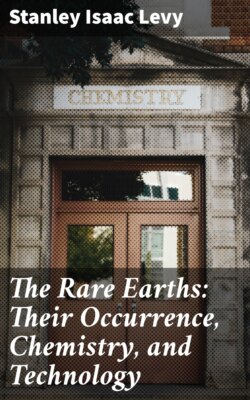Читать книгу The Rare Earths: Their Occurrence, Chemistry, and Technology - Stanley Isaac Levy - Страница 167
На сайте Литреса книга снята с продажи.
Naegite.
Оглавление[52]—This rare mineral is a silicate closely related to zircon, but of rather more complex composition. It may be represented as silicate of zirconium, ZrSiO₄ (zirconia = 55·3, silica = 20·6 per cent.), with rare earths (chiefly yttria, 9·1 per cent.), uranium (UO₃ = 3 per cent.), and thorium (ThO₂ = 5·0 per cent.), partly as silicates, partly as columbates and tantalates ((Cb,Ta)₂O₅ = 7·7 per cent.).[53]
[52] Beiträge zur Mineralogie von Japan, 1906, 2, 23.
[53] An earlier analysis (Abstr. Chem. Soc. 1905, 88, [ii.], 177) gave over 20 per cent. of uranous oxide, UO₂; the greater part of this appears to have been zirconia, ZiO₂.
It is tetragonal, usually occurring in globular aggregates of crystals. The measurable angles are extremely close to those of zircon, and it is probable that naegite is isomorphous with the series mentioned above under Thorite.
The hardness is 71⁄2, the sp. gr. 4·091. The colour is dark green or brown, becoming dull by weathering. The double refraction is extremely weak.
So far it has only been found in the ‘placer’ tin deposits or ‘gravel tin’ of Japan.
The following minerals (see list) are also to be included in this sub-class:
Alvite (Anderbergite or Cyrtolite), Auerbachite, Malacone, Oerstedite and Tachyaphaltite, altered varieties of zircon.
Calciothorite, Eucrasite and Freyalite, altered varieties of Thorite.
Pilbarite, Thorogummite and Yttrogummite, hydrated silicates of thorium with uranium and other metals.
